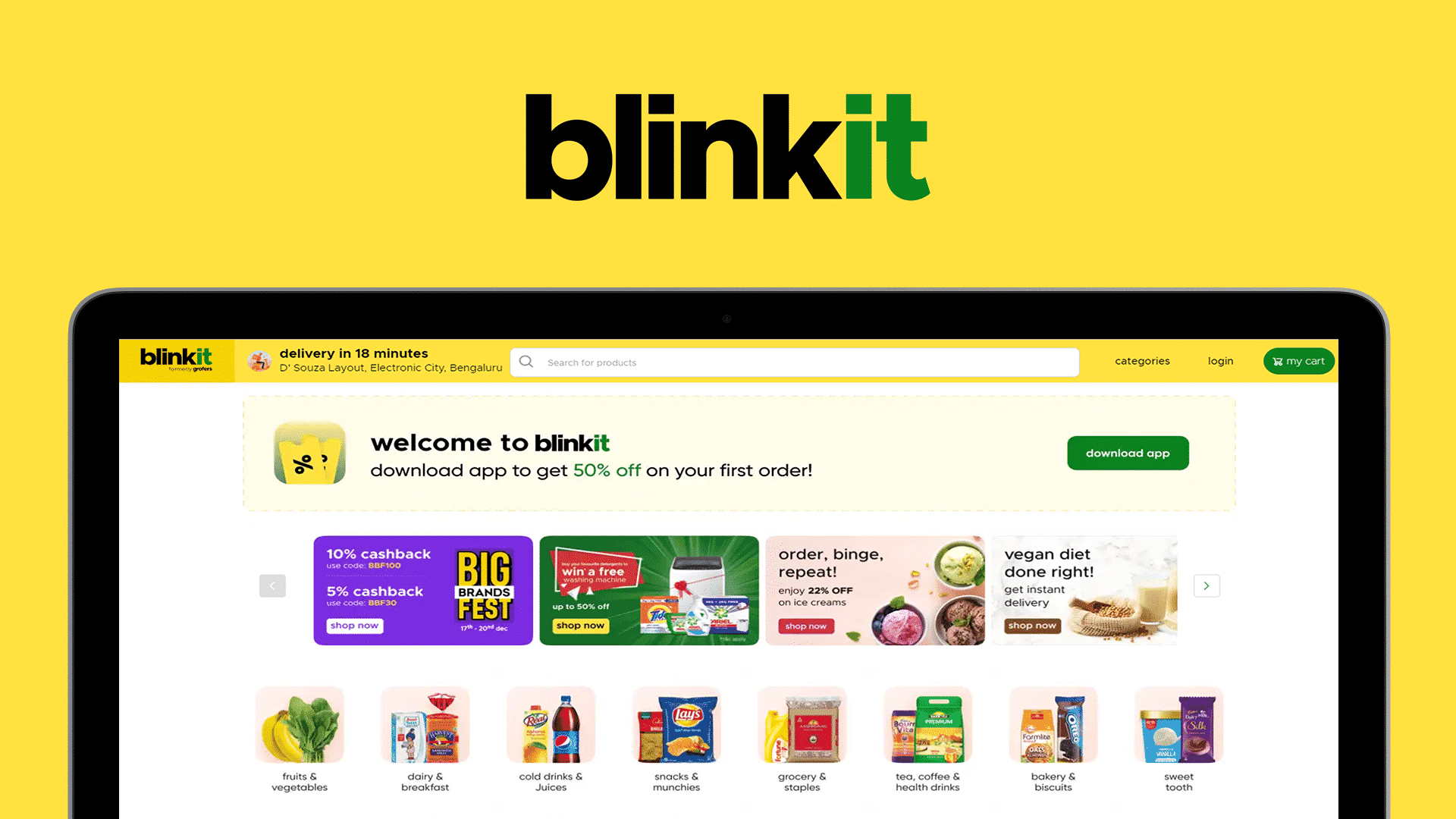The grocery delivery industry has seen explosive growth in recent years, with platforms like Blinkit (formerly Grofers) revolutionizing the way people shop for daily essentials. With the promise of delivering groceries within minutes, Blinkit’s hyperlocal business model is a great case study for entrepreneurs interested in launching a similar venture.
If you’re wondering how to start a business like Blinkit or how to make an app like Blinkit, this guide is for you. We’ll break down the key components—from market research and business models to app development and tech stack recommendations (like those offered by Findthecoder).
1. Understanding Blinkit’s Business Model
Before you jump into development, you need to understand how Blinkit works.
Key Features of Blinkit:
- Hyperlocal Delivery (10–30 minutes)
- Real-time inventory management
- Customer mobile and web apps
- Partner/staff delivery apps
- Warehouses or dark stores in urban localities
- API integration with POS and payment gateways
Revenue Streams:
- Delivery Charges
- Product Markup
- In-App Promotions
- Vendor Partnerships
2. Market Research & Feasibility Study

How to start a business like Blinkit? First, evaluate the market. Ask these questions:
- What is the demand in your chosen region?
- Are there existing players (e.g., Zepto, Instamart, BigBasket)?
- What product range should you start with (grocery, dairy, snacks)?
- What’s the delivery radius?
- How will you source your inventory (own warehouses vs vendor partnerships)?
Tools to use:
- Google Trends
- Local surveys
- Competitive SWOT analysis
3. Choose a Business Model
Here are 3 common models you can choose from:
a) Inventory Model
You stock goods in your own warehouse (like Blinkit’s dark stores). Higher investment, better control.
b) Marketplace Model
You act as an intermediary connecting local vendors and customers. Less investment but more dependent on vendor reliability.
c) Hybrid Model
Use your own inventory for high-demand SKUs and partner for the rest.
4. Features Needed in a Grocery Delivery App Like Blinkit

To build an app like Blinkit, you’ll need at least 3 modules:
1. Customer App (Android/iOS/Web)
- Registration/Login
- Product browsing
- Add to cart
- Real-time delivery tracking
- Multiple payment options
- Ratings & Reviews
- Offers and discount management
2. Delivery Partner App
- Order assignment
- GPS navigation
- Order history
- Earning reports
3. Admin Panel
- Order management
- Inventory control
- User management
- Sales reports
- Delivery analytics
- Vendor management
Findthecoder offers custom grocery app development with all the above features tailored to your requirements.
5. Tech Stack to Build a Website/App Like Blinkit
Here’s a suggested stack for a scalable, high-performance solution:
Front-End:
- Mobile: Flutter / React Native
- Web: React.js or Angular
Back-End:
- Node.js or Django (Python)
- Express.js
- RESTful or GraphQL APIs
Database:
- MongoDB or PostgreSQL
- Redis (for caching and real-time updates)
Hosting & Cloud:
- AWS / Google Cloud / Azure
- Firebase (for notifications and real-time database)
Other Integrations:
- Razorpay / Stripe (payments)
- Google Maps API (delivery tracking)
- Twilio (SMS & OTP)
- ElasticSearch (fast product search)
Pro Tip: For full-stack custom development, agencies like Findthecoder can help build a complete Blinkit clone app or a fully custom solution based on your goals.
6. Logistics & Fulfillment Strategy
Fast delivery is the foundation of Blinkit’s success. Here’s how you can build your own:
a) Dark Stores
Set up small warehouses in key locations. Stock top-selling items here for quick delivery.
b) Delivery Fleet
Hire full-time delivery staff or partner with third-party logistics (e.g., Dunzo, Shadowfax).
c) Route Optimization
Use AI-based route optimization tools to reduce delivery time and fuel cost.
7. UI/UX Considerations
The UX design should reflect:
- Ease of product discovery
- Minimal checkout process
- Personalization (based on shopping history)
- Easy reordering
- Clear refund & return options
A good user interface directly impacts retention and sales. Companies like Findthecoder specialize in UI/UX for high-conversion grocery apps.
8. Legal & Compliance
When setting up a grocery delivery app like Blinkit in India:
- Register your company (LLP/Pvt. Ltd.)
- Get FSSAI licenses for food handling
- Comply with local labor laws for delivery staff
- Ensure privacy policy and GDPR compliance
- Integrate secure payment gateways (with PCI-DSS compliance)
9. Monetization Strategies
Beyond charging delivery fees, here are ways to grow revenue:
- Featured Products – Charge brands for visibility
- Subscription Plans – Like Blinkit Max (free delivery, exclusive discounts)
- Bulk Orders – Office pantries, housing societies
- In-app Ads – Sponsored product placement
10. Marketing Strategy
To stand out in a crowded market, build your customer base strategically:
Online Marketing:
- Google Ads & Facebook Ads
- SEO-optimized landing pages
- Influencer marketing on Instagram/YouTube
Offline Marketing:
- Flyers in gated communities
- Referral programs for delivery agents
- Partner with local Kirana stores
Retention:
- Loyalty points
- Push notifications
- Cart reminders
- Cashback coupons
11. Partnering with a Tech Team Like Findthecoder
Findthecoder is a specialized tech company offering end-to-end development for on-demand platforms. They offer:
- Custom grocery app and website development
- Agile development methodology
- UI/UX design services
- Post-launch maintenance and scaling
- MVP development for startups
Conclusion
Starting a business like Blinkit is highly feasible if you blend the right technology, operations, and local partnerships. From building the app like Blinkit to handling logistics, monetization, and customer service, success depends on continuous iteration and user satisfaction.
With a technology partner like Findthecoder, Hw Infotech you can bring your idea to life quickly, efficiently, and within budget

